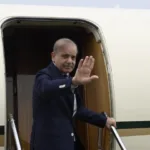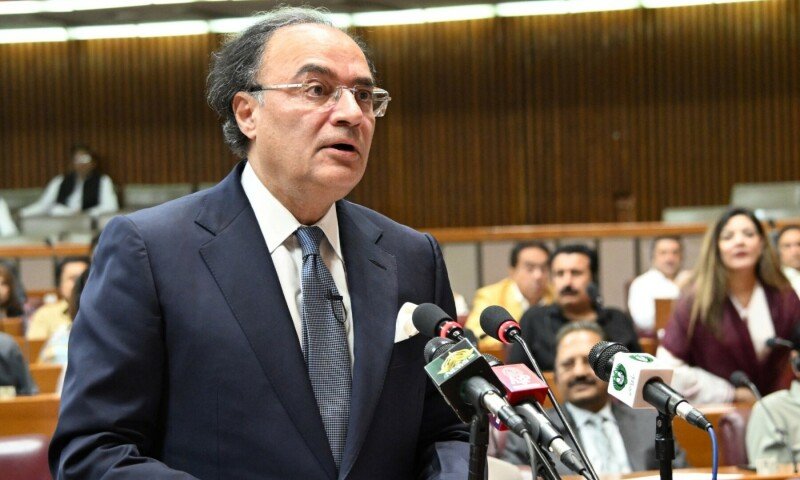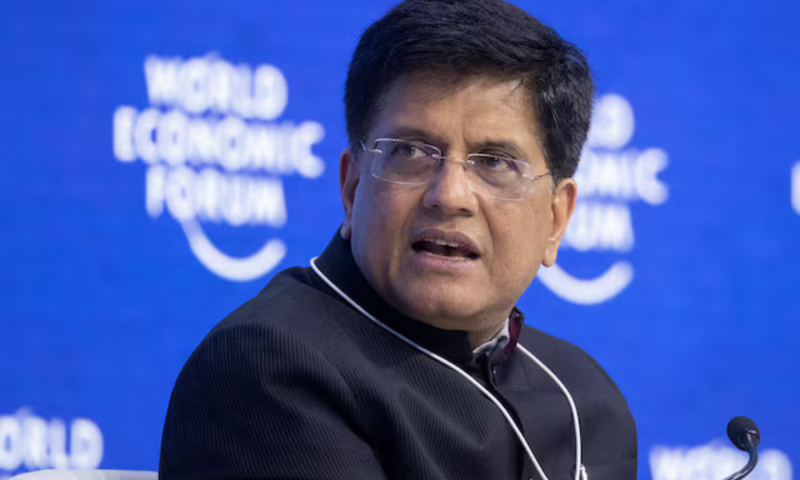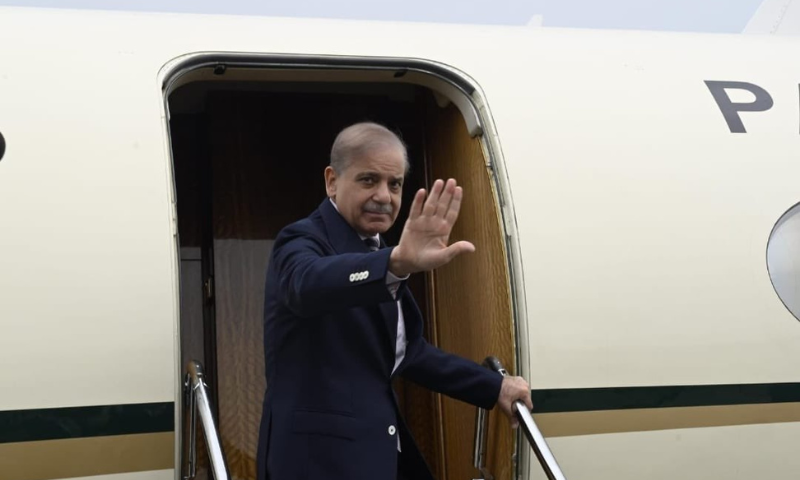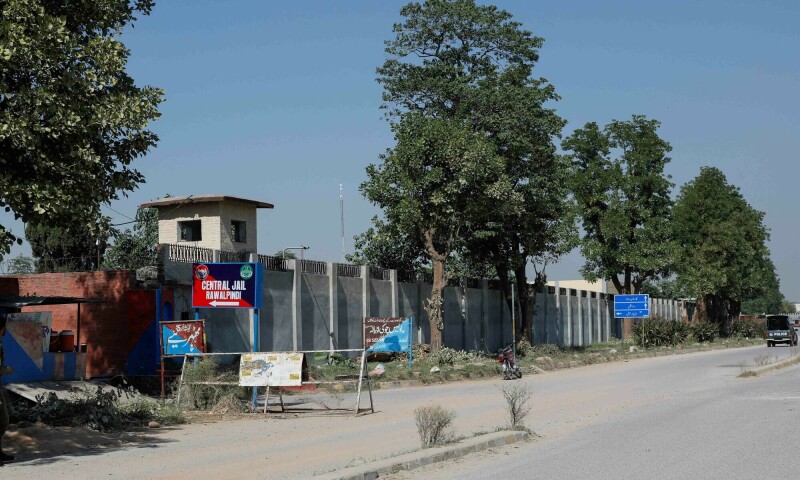Defence spending up by a steep 20 per cent; finance czar says country expecting $71bn in cash flows, $7bn in taxes.
Finance Minister Muhammad Aurangzeb on Tuesday unveiled Pakistan’s annual federal budget in a charged National Assembly session, outlining ambitious plans to drive 4.2 per cent growth while slashing overall spending and tightening tax measures.
As the session — chaired by NA Speaker Sardar Ayaz Sadiq — commenced, opposition lawmakers erupted into anti-government slogans. Opening his speech, Finance Minister Muhammad Aurangzeb said the budget was being presented at a “historic moment” marked by national unity and resolve, referencing the recent Pakistan-India conflict.
“The spirit with which we protected our national sovereignty, we need to ensure our financial security in the same way,” he maintained, continuing his speech through the noisy session.
“Pakistan has now achieved economic stability and is moving towards a Pakistan that is prosperous.”
The minister highlighted the current account surplus, remittances and the stability of the rupee while also mentioning the positive reports from international credit rating agencies Moody’s and Fitch that upgraded Pakistan’s rating.
The federal budget for fiscal year 2026 has a total outlay — the sum of expenditures and net lending of funds — of Rs17.573 trillion, representing a 6.9 per cent decrease from the previous year’s budget.
The government has proposed Rs16,286bn for current expenditure in the FY26 budget, a 5.33pc decrease from the previous year.
Interest payments, or debt servicing, have contracted by per cent to Rs8,207bn, yet continue to consume almost half of the total budget outlay and becoming, like in the last few years, the government’s single largest expense.
Defence expenditure constitutes Rs2,550bn, 20.2pc higher than last year’s budget, making up 1.97pc of GDP, an increase from last year’s 1.71pc.
Aurangzeb said that it was unavoidable to aim for a 14pc tax-to-GDP ratio and added that achieving the national targets was “impossible without the transformation of the Federal Board of Revenue (FBR).”
The government has set an ambitious tax collection target for the FBR at Rs14,131 billion, an 8.95pc increase from last year’s goal.
Detailing that transformation, the minister listed B2B e-voicing, AI-based audit selection systems for sales and income tax, e-billing and faceless audits, and a new central control unit to centralise data collection, among other steps.
Expanding upon the results, he said 390,000 high-value non-filers of tax were identified through data integration, with Rs300m recovered. The minister further highlighted that there was a 100pc increase in the number of tax filers, taking the revenues to Rs105bn.
“For the first time, the IMF (International Monetary Fund) has acknowledged Rs389bn revenues through law enforcement,” he said.
He also took a jibe at those “who were raising alarm about a mini-budget”, adding that no such move had been taken by the government.
The finance czar said that there was a 31pc reduction in electricity prices, as well as 50pc reduction in prices for protected consumers.
Mentioning the privatisation of distribution companies, he said: “Professional boards have been cleared of political corruption.”
The minister went on to announce that the government had made plans to “procure cheap energy”. Noting the closure of costly power plants and reforms in the oil and gas sector, he said Turkish and other international companies were willing to invest in Pakistan.
He mentioned the $5bn investment pledge by Reko Diq and pointed out fuel price deregulation aimed to promote competition.
“Gold mines in Reko Diq are a key part of our future. The plan’s feasibility study was completed in January,” he noted.
“We expect $71bn in cash flows [as well as] $7bn in tax and $8bn in royalties,” he said, terming the project a “game changer”.
Detailing the steps to be taken under the National Tariff Policy, Aurangzeb said additional customs duties will come to an end in four years, regulatory duties will end in five years, Customs Act’s Schedule 5 will also be eliminated in five years, and customs duty will be structured in slabs, with the maximum being 15pc.
“Tariff reforms will be applied step by step so that businesses can adjust and challenges are reduced. This will apply to all economic areas, including pharma, IT, telecom, textile and engineering.”
Quoting the World Bank, Aurangzeb informed the NA that these instruments would lower the tariffs, bringing them to the same level as Vietnam and Indonesia.
He then spoke about improving debt management and said: “Our economy has been stuck in debt for two decades, paying back loans. Our debt-to-GDP ratio was 74pc two years ago. But now, it is below 70pc. We will lower it further.
“We are diversifying debt products, the Sukuk bond has been started and launching products is being considered.”
The minister stressed that reforms in loss-making state-owned enterprises were underway, along with steps being taken to reduce fiscal strain and invite investment.
“We will complete PIA (Pakistan International Airlines) and Roosevelt Hotel transactions this year,” he asserted.
On pension reforms, the minister highlighted that the increase in pensions had been “linked” to the Consumer Price Index (CPI).
Pointing out that Pakistan was one of the most vulnerable countries to climate change, the minister underscored the need for foreign assistance in mitigation, noting the IMF’s $1.3bn climate fund.
On social protection, the minister reaffirmed the government’s commitment to helping the underprivileged, stating that Benazir Income Support Programme (BISP) helped over 11m children go to school.
He added that 1.5m pregnant mothers and children were given funds, while 250,000 were granted training on financial literacy.
Speaking about the digital sector, Aurangzeb noted that Pakistan’s cybersecurity ranking was rising. “There has been $3.1bn in IT exports in the year’s 10 months, which is 21.2pc more than the previous year,” he said.
The minister proposed raising IT exports to $25bn in the next five years.
Aurangzeb informed the parliament that the Small and Medium Enterprise Development Authority had launched a three-year plan for financing small and medium enterprises.
He said that under the SME risk coverage scheme, 95,000 SMEs had received Rs300bn in funding till May 2025.
The finance minister mentioned that the government’s planned scheme would allow the purchase of cheap houses.
On the topic of overseas Pakistanis, he noted $31.2bn were remitted to Pakistan, recording a 31pc increase of $10bn.
He affirmed that the government was taking steps for overseas Pakistanis, including an online system, civil procedure laws to prevent fraud, a quota in chartered medical schools, and civil awards for the top 15 senders.
Speaking about the agricultural sector, which comprises 34pc of the economy, Aurangzeb said Rs2.64bn were earned in FY24-25, adding that the National Seed Policy 2025 and the National Agri Technology Policy 2025 had been “nearly approved”.
Announcing the government’s plan to create a “competitive economy”, Aurangzeb said that economic growth in the upcoming fiscal year was expected to remain 4.2pc.
Regarding the fiscal deficit, the government aims for a lower target of 3.9pc of the GDP — or Rs5,037bn — from last fiscal year’s target of 5.9pc. The primary surplus would be targeted at 2.4pc of the GDP.
The government has set an inflation target of 7.5pc for the next fiscal year.
Pakistan’s total revenue for fiscal year 2025 is budgeted at Rs19,278 billion.
After accounting for provincial transfers of Rs8,206 billion, the net revenue stands at Rs11,702bn, representing a 6.7pc increase from the previous year.
The government has allocated Rs4,223.8bn for the Public Sector Development Programme (PSDP) in FY25, an 11.4pc increase from last year’s Rs3,792.2bn.
The total federal PSDP, which includes state-owned enterprises and public-private partnerships, has contracted with Rs1,354.8 billion, representing a 20pc decrease from last year’s Rs1,696 billion.
Provincial PSDP allocation, on the other hand, has risen 36.9pc to Rs2,869 billion, up from Rs2,095 billion in the previous year.
The minister also praised the Strategic Investment and Facilitation Council (SIFC) for taking forward “strategic brownfield and greenfield projects”.
“Interprovincial and interfederal connection improved,” he added.
Referring again to the recent Pakistan-India conflict, Aurangzeb stressed the need for the country to increase its water reservoirs and ensure water security.
Under the 2018 National Water Policy, he mentioned the goals of 10m-acre increase in water storage, 35pc reduction in water waste and 30pc increase in water-use efficiency.
He detailed that Rs133bn would be allocated for projects, Rs34bn for investment and Rs2bn for 15 key schemes, detailing the breakdown for various dams.
Regarding the energy sector, the minister said that the government needed to ensure the provision of cheap energy.
He said that 47 schemes and Rs90.2bn were allocated to the energy sector, including Rs840m for the Tarbela 5th Extension, Rs10.9bn for the Dasu hydel project, Rs3.5bn for the 884MW Suki-Kinari Hydropower Project, and Rs35.7bn for the Momand hydel dam.
The allocations for other power projects included Rs4.4bn for the Allama Iqbal Industrial City grid station, Rs1.1bn for the Quaid-i-Azam Business Park, Rs1.6bn for the 100KVA and 200KVA transformers asset performance management system, Rs2.9bn for the Islamabad Electric Supply Company (IESCO) advanced metering infrastructure, Rs1.8bn for the Multan Electric Power Company (MEPCO) getting, Rs1.9bn for the Hyderabad getting, Rs2.4bn for the Peshawar getting, Rs67.2bn for the Water and Power Development Authority (Wapda) clean electricity scheme, Rs3bn for five energy schemes of Azad Jammu and Kashmir and Gilgit Baltistan, and 1.2bn for GB grids.
He also mentioned the Matiari-Moro-Rahim Yar Khan Transmission Line project to strengthen transmission.
The finance minister once again shed light on the agricultural sector, saying that fields were being revived under the Green Pakistan Initiative.
“Genetic improvement and post-harvest processes will be focused on,” he said, adding that a total of 1,000 agriculture graduates had been sent to China on government-funded programmes. He also announced five new livestock schemes.
Aurangzeb said the Higher Education Commission (HEC) would be receiving Rs39.5bn for 170 projects, of which Rs38.5bn would be set aside for the provinces.
He added that electric wheelchairs, laptops and other audiovisual aids would be distributed under the programme.
For the IT sector, he said the government had proposed Rs4.8bn for ongoing projects under the Uraan Pakistan plan. The schemes included TV modules, a Pakistan-Korea testing facility, and a printed circuit board facility.
To bridge the illiteracy gap, the minister said Rs9.8bn will be allocated for 11 new Daanish Schools — four in Balochistan, three in Azad Jammu and Kashmir, three in GB and one in Islamabad.
Speaking about the Public Sector Development Programmes (PSDP), the minister said a total of Rs18.5bn had been earmarked for those, of which Rs3bn were for the prime minister’s scheme to rebuild flood-damaged schools in Sindh.
“A total of Rs4.3bn [have been allocated] for the PM’s Youth Skill Dev programme, under which 165,100 young people receive skills training,” he added.
On the health side, Rs14.3bn had been allocated for 21 schemes under the PSDP.
“Jinnah Medical Complex and Research Centre will get Rs4bn for a flagship teaching and treatment facility in the capital […] Rs1bn will be given to eradicate hepatitis,” he highlighted.
The minister added that Rs800m of these would be allocated for controlling and preventing diabetes, while Rs900m would be earmarked for a stroke centre at Pims Hospital in Islamabad.
Aurangzeb also detailed planned budget shares for AJK, GB and the merged districts of Khyber Pakhtunkhwa. “Out of a total of Rs164bn allocated for development projects, Rs48bn each would be set aside for AJK and GB, while Rs68bn would be for KP’s merged districts,” he said.
‘What have the elite done?’
Prior to the session, Prime Minister Shehbaz Sharif, following a meeting of the federal cabinet, questioned the contributions made to the national exchequer by the country’s elite economic group, ahead of the presentation of the budget for FY26.
“Today, the federal cabinet will discuss the budget and give its approval. In the previous quarter year, the entire nation has faced these challenges. This is in no way an ordinary achievement.
“The sacrifices the common man has made, the burden the salaried class has borne in the previous budget. They say ‘we are salaried [class] but still gave Rs400bn to the treasury […] what have the elite and the wealthy groups contributed compared to us?’,” he added.
“This is a question that the elite, including me, have to answer,” the premier noted.
He further said, “Pakistan is standing at a point where we have to take off,” adding that the country’s stability indicators were satisfactory.
“Be it the inflation rate, be it the policy rate, your exports increased, your remittances have seen a quantum jump, your IT exports have increased, and they have a lot of potential to increase.”
More to follow.



